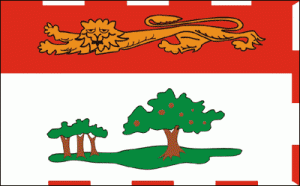Prince Edward Island
Pray:
- Pray for the Aglow groups and leaders to be strengthened.
- Pray for all the resources and creativity needed to fulfill the intentions of God in the province of Prince Edward Island.
- Pray for the Aglow prayer group in the Capital city.
- Pray for godly government leaders. Blessed is the nation whose God is The Lord, the people whom He has chosen for His own inheritance. Psalm 33:12
Proclaim:
- Arise, shine; for your light has come! And the glory of the LORD is risen upon you. For behold, the darkness shall cover the earth, and deep darkness the people; but the LORD will arise over you, and His glory will be seen upon you. Isaiah 60:1,2 (NKJV)
- Lift up your heads, O you gates! Lift up, you everlasting doors! And the King of glory shall come in. Who is this King of glory? The Lord of hosts, He is he King of glory. Psalm 24:9-10 (NKJV)
Interesting Facts About Prince Edward Island
Government: The province of Prince Edward Island has a parliamentary form of government. The chief executive of Prince Edward Island is the lieutenant governor, who is appointed by the Canadian governor-general in council to serve a 5-year term. The lieutenant governor, representing the British crown, holds a position that is largely honorary. The premier, the leader of the majority party, is the actual head of the provincial government and presides over the executive council.
The Legislative Assembly contains 27 seats, including those of the premier and the members of the executive council. Members of the legislature are popularly elected to a 5-year term; however, the lieutenant governor, on the advice of the premier, may call for an election before the term has been completed. The province of Prince Edward Island is represented by 4 senators appointed by the Canadian governor-general in council and by 4 members in the House of Commons popularly elected to serve terms of up to five years in the Canadian Parliament.
People: Approximately 80 percent of the people are of British (mainly Scottish and Irish) origin. About 15 percent are of French origin, and five percent speak French. Of this number, 62 percent live in the rural districts, including 8 percent on farms. The island population is quite young with about 38 percent of the people under 25 years of age.
History: Abegweit, the aboriginal name for Prince Edward Island has been home to the Mi’kmaq for thousands of years. The name means “lying down flat,” but is freely translated as “cradled by the waves.” There is evidence that the ancestors of the Mi’Kmaqs lived on the island 10,000 years ago, presumably having migrated across the low plain now covered by Northumberland Strait.They fished along the coasts and rivers, hunted the interior and gathered berries and fish. Mi’kmaq continue to live on PEI preserving their crafts and culture.
The first European to discover the island was Jacques Cartier who landed in 1534. Cartier described it as “the most beautiful stretch of land imaginable.” No permanent colony existed until the French established one in 1719. The British deported the Acadians from Nova Scotia in 1755 and claimed the Island, then known as the Island of Saint John. By the time the Fort at Louisbourg fell to the British in 1758 the island’s population had risen to 5,000.
In 1766, British Captain Holland divided the island into 67 parcels of land. He distributed these to a group of British landowners, mainly absentee aristocratic landlords. This colonial giveaway gave rise to numerous problems as the population grew and the landbase dwindled. The absentee landlords most often refused to sell their lands to their tenants, or demanded exorbitant purchase or rental prices. In 1769 the Island of Saint John became a separate British colony, and in 1799 it was given its present name, in honour of Prince Edward of England.
Prince Edward Island is known as “the cradle of Confederation” since Charlottetown, was the site of the 1864 conference that set Canadian Confederation in motion. The island, however, waited until 1873 to join the Dominion of Canada.
In the twentieth century Prince Edward Island developed slowly with agriculture as its base and the tourism industry becoming a predominant part of PEI culture and business by the end of the century.
Interesting Facts information from the library.educationworld.net/canadafacts website. Read more about Prince Edward Island


